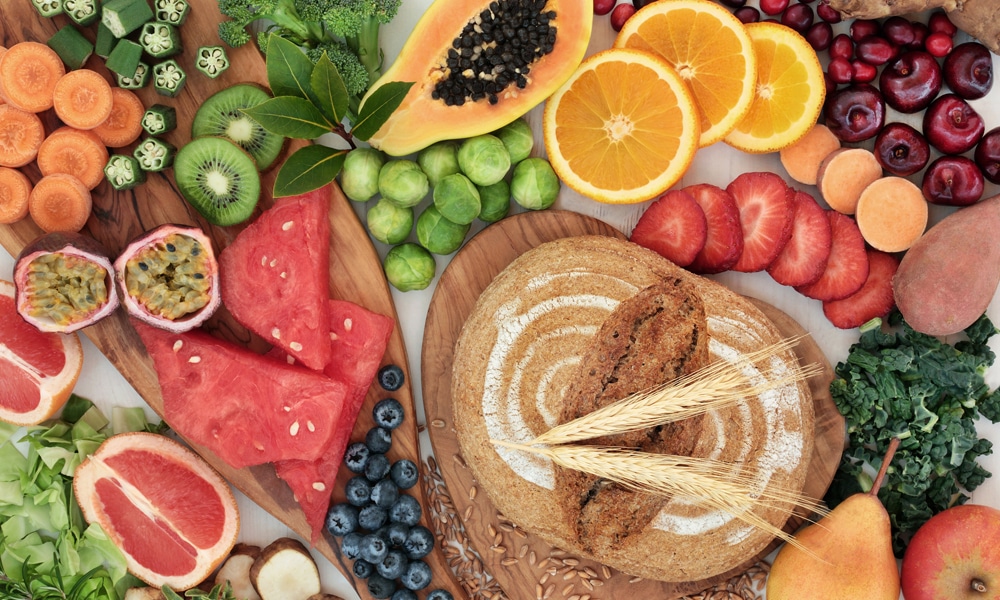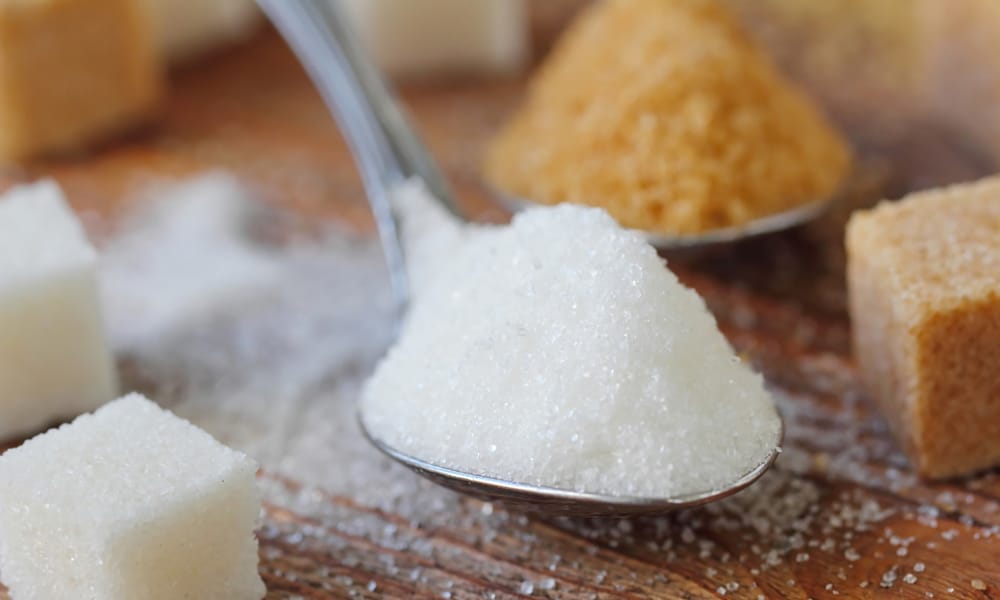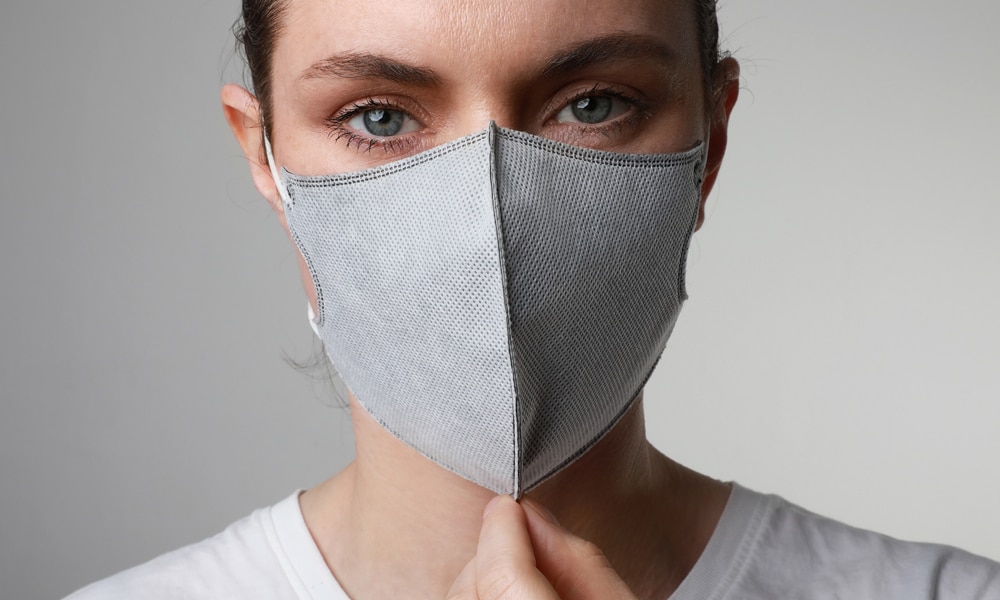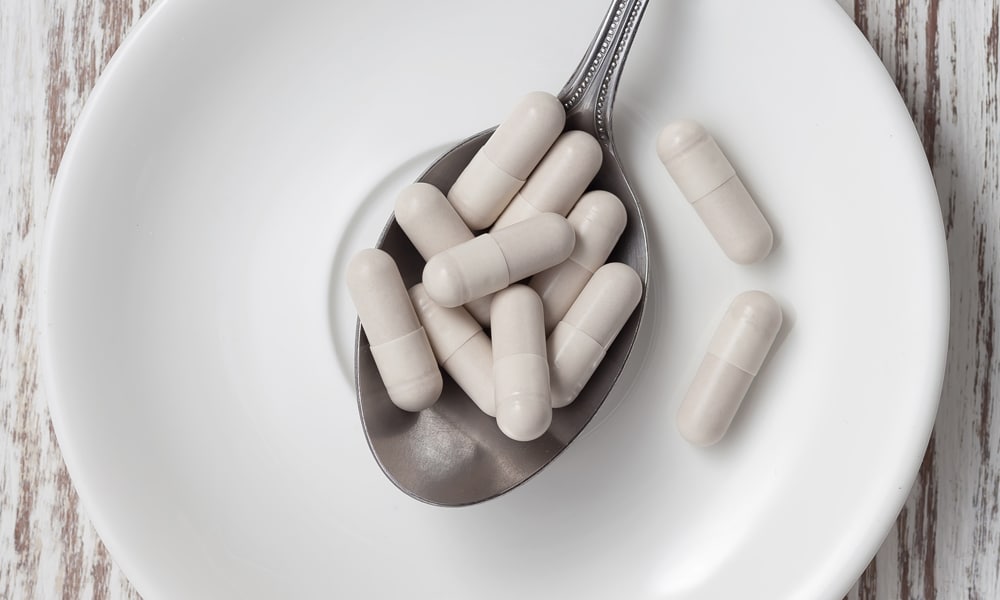While mainstream conversations about nutrition often focus on things getting enough protein, calcium, or vitamin D, we don’t hear quite as much about a nutrient that is frequently lacking in many diets: fiber. Getting enough fiber is critical for good health, both in the short- and long-term sense. Here’s what you need to know about the importance of fiber, how much you should be aiming for, and the best ways to make sure you get enough of it in your diet.
![]()
![]()
![]()
![]()
![]()
![]()
![]()
![]()
![]()
![]()
![]()
![]()
![]()
![]()
![]()
![]()
![]()
![]()
![]()
![]()
![]()
![]()
![]()
![]()
![]()
![]()
![]()
![]()
![]()
![]()
![]()
![]()
![]()
![]()
What is Fiber?
Fiber is a carbohydrate only found in plant foods, including fruits, vegetables, grains, legumes, nuts, and seeds. It cannot be digested by the body, unlike other types of carbohydrates, which your body breaks down into sugar molecules to use for energy. Fiber is sometimes called “roughage” or “bulk” in the diet, which gives some indication as to what it does when it enters your digestive tract.
Fiber is divided into two categories:
- Soluble fiber: This type dissolves in water and creates a gel-like substance as it moves through your body. Most soluble fibers are fermented in your colon, to become gases and byproducts like short-chain fatty acids (butyrate, propionate, and acetate) that play a role in immunity. Soluble fiber helps lower blood sugar levels as well as blood cholesterol. Some of the soluble fibers include fructans, alginic acids (agar, carrageenan), raffinose, and polydextrose. Psyllium is also a soluble fiber, but unlike the others it doesn’t ferment in the digestive tract.
- Insoluble fiber: This type doesn’t dissolve in water, but draws water into your digestive tract and helps move food through. It helps maintain bowel regularity and prevent constipation, supporting gut health. Some of the insoluble fibers include beta-glucans (cellulose, chitin), hemicellulose (hexoses, pentoses), lignin, xanthan gum, and resistant starch.
Since both types of fiber have unique purposes and health benefits, an optimal diet should incorporate sources of each from plants or supplements. Most plants contain both types of fiber, in varying amounts, so eating a variety of whole plant foods is a good way to cover your bases through food.
Over 11 hours of video content are now available to stream from any device. If you cannot attend our annual Summit at Terranea Resort, sign up for the Virtual Summit instead and get the same information from the in-person Summit in the convenience of your own home.
Health Benefits of Fiber
Getting enough fiber is one of the most researched ways to optimize your health through nutrition. Some of the most well-established benefits of fiber consumption are discussed below.
- Supports a healthy weight (check your Body Mass Index to see how you stack up). Obesity has been linked to an increased risk for numerous chronic diseases and conditions, such as heart disease, diabetes, cancer, osteoarthritis, kidney and liver disease, depression, and sleep apnea.[1] A fiber-rich diet promotes healthy weight loss and supports healthy weight maintenance, largely by regulating your hunger-fullness cues and satiety signals. In fact, research has found that fiber helps promote weight loss and adherence to a calorie-restricted diet among overweight and obese individuals, independent of their macronutrient and caloric intake.[2]
- Supports healthy blood sugar. A fiber-rich diet helps regulate blood sugar levels and improve insulin sensitivity, which can reduce risk for developing diabetes. A 2018 umbrella review of 16 meta-analyses published in the Journal of Chiropractic Medicine found that people who consumed the largest amounts of dietary fiber experienced a reduction in type 2 diabetes incidence, as well as a lower fasting blood sugar concentration, which is a good indication of the body’s blood sugar control.[3]
- Supports healthy blood pressure. Untreated high blood pressure can damage your blood vessels, causing them to leak or rupture. It can also cause blood clots that can lead to a stroke, heart attack, and even brain damage. Soluble fiber has been especially well-studied for its ability to lower high blood pressure levels.[4]
- Supports healthy cholesterol levels. While your body makes and needs cholesterol to build healthy cells, having high levels of cholesterol raises your risk for heart disease. High cholesterol levels indicate that there are likely fatty deposits in your arteries, which make it difficult for blood to flow through them normally. Arterial cholesterol deposits can break off and form a blood clot, leading to a stroke or heart attack. The insoluble fiber beta-glucan, good sources of which are apples and oats, has been shown to reduce levels of LDL “bad” cholesterol as well as apoB, a protein associated with atherosclerosis.[5]
- Reduces risk for cancers. Fiber plays a significant role in cancer risk reduction. Dr. Kristi Funk has been quoted as saying that fiber “crushes cancer’s dreams when it binds estrogen and toxins in your gastrointestinal tract, improves insulin sensitivity, and releases a litany of antioxidant vitamins and anticancer compounds.”[6] A 2015 clinical trial published in the American Journal of Clinical Nutrition found that a high intake of fiber was associated with a significantly reduced risk of a cancer called distal colorectal adenoma, especially when fiber came from cereal grains and fruits.[7] A 2018 meta-analysis examined 17 studies with 149,177 participants (including 7,609 ovarian cancer patients), finding that high dietary fiber intake was associated with a reduced risk for ovarian cancer, compared to low fiber intake.[8] A fiber-rich diet also has protective effects when it comes to breast cancer risk. A 2020 meta-analysis looked at 17 cohort studies, 2 nested case-control studies, and 1 clinical trial study, finding that high total fiber intake was associated with a lower risk for both premenopausal and postmenopausal breast cancers.[9]
- Promotes bowel regularity. A fiber-rich diet helps to bulk up stool, keep bowel movements regular, and prevent constipation and hemorrhoids. Whether via plants or supplements, the very nature of fiber is that it helps flush your digestive system and keep things moving through normally. Insoluble fiber specifically is known to bind with toxic compounds, including carcinogens, that are formed during digestion, and eliminate them from the body via stool.[10]
As you can see, a good balance of both soluble and insoluble fiber is necessary to set yourself up for the most short- and long-term health benefits.
 We’ve been working hard on this. Add your e-mail address and we will tell you as soon as it launches.
We’ve been working hard on this. Add your e-mail address and we will tell you as soon as it launches.
"*" indicates required fields
Fiber and Immunity
The fact that eating a fiber-rich diet is associated with a lower risk for numerous chronic diseases and conditions indicates that it plays a pretty big role in your immune function, reducing inflammation and protecting your body from various threats. Let’s look at how fiber benefits your body’s immune defense system.[11]
You may have heard before that health begins in the gut. In other words, to improve your overall health, it’s a good idea to start with the status of your digestive system. And if you haven’t guessed by now, your digestive health has a lot to do with the quality and fiber content of your diet.
Fiber helps to rebalance gut bacteria and maintain a healthy gut microbiome. Fiber-rich diets promote diversity in gut bacteria, as well as amounts of bacteria that produce short chain fatty acids. Soluble fiber, specifically, promotes your body’s production of the protein interleukin-4, which stimulates infection-fighting T-cells involved in immune response. It tells immune cells to act as healing, anti-inflammatory cells to promote healing and recovery.[12]
The best way to optimize immunity from the inside out is to nourish your body well, incorporating a wide variety of fiber-rich foods. This means eating a nutritious diet and practicing healthy habits year-round, not just during cold and flu season or other times of heightened susceptibility.
Stay Connected
Stay Connected
How Much Fiber do you Need?
While the benefits of fiber are undeniable, the majority of us still don’t get enough of it.
The Western diet, often called the Standard American Diet, is known to be associated with an increased risk for the metabolic and chronic inflammatory conditions detailed above. It’s also characterized by eating foods that are highly processed, nutrient-poor, and lacking in fiber.[13]
The minimum daily recommended amounts of fiber are as follows:
- Women, 50 and under: 25 grams
- Women, over 50: 21 grams
- Men, 50 and under: 38 grams
- Men, over 50: 30 grams
A good rule of thumb is to aim for at least 30 grams per day. However, surveys have found that most people in the United States get barely half of that amount – instead getting around 15 grams. In fact, it’s estimated that only around 5% of the population meets their daily fiber requirements due to improper diets and the relatively low number of fiber products available for supplementation. This widespread lack of fiber intake is so widespread that it’s been called a public health concern.[14][15]
As you know, not getting enough fiber can result in constipation and chronic conditions. However, getting too much fiber can also have unwanted effects, like gas, pain, and abdominal bloating. In some cases, too much fiber can also throw off bowel regularity, resulting in constipation or diarrhea.
This is more likely if you’ve been accustomed to eating a low-fiber diet and increase your intake too quickly. For this reason, it’s a good idea to increase fiber intake gradually, and drink enough water, to allow your body to adjust accordingly.
Over 11 hours of video content are now available to stream from any device. If you cannot attend our annual Summit at Terranea Resort, sign up for the Virtual Summit instead and get the same information from the in-person Summit in the convenience of your own home.
Best Dietary Fiber Sources
Fiber is found only in plants, while animal-derived products like meat, fish, eggs, and dairy contain none. Fiber is a naturally-occurring nutrient in fruits, vegetables, grains, nuts, seeds, and legumes (e.g., beans, peas, and lentils). Fiber is highly concentrated in the edible skins and peels of produce, while cooking only has a minimal impact.[16][17]
When it comes to grains, choose whole grains over white, refined grains to get the most fiber. The main reason for their difference in fiber content is how they’re processed. Whole grains are processed to maintain their three parts – the bran, germ, and endosperm – where the majority of fiber and other nutrients are found. On the other hand, white, refined grains only maintain the endosperm. While refined grains are often enriched with nutrients lost with removing these parts, fiber isn’t one of them. Some examples of whole grains include barley, oatmeal, quinoa, buckwheat, millet, wild rice, and 100% whole wheat.
To give you an idea of how much fiber is in plant foods, below are some fiber-rich choices that you might enjoy incorporating into your diet.
- 1 medium carrot: 2 grams
- ½ cup oats, 5 grams
- ½ cup kidney beans: 8 grams
- ½ cup chickpeas: 4 grams
- 1 cup blueberries: 4 grams
- 1 small head endive lettuce: 9 grams
- ½ cup mushrooms: 2 grams
- 1 cup chopped broccoli: 3 grams
- 1 medium apple: 4 grams
- 3 tbsp raw almonds: 4 grams
- ½ cup raw walnuts: 4 grams
- ¼ cup chia seeds or flax seeds: 11 grams
- 1 medium pear: 5 grams
- 1 avocado: 13 grams
- 1 cup raspberries: 9 grams
- ½ cup lentils: 10 grams
Some of the best places to find soluble fiber include oats, barley, citrus, carrots, apples, beans, and peas. Insoluble fiber sources include whole-wheat flour, wheat bran, potatoes, green beans, nuts, and cauliflower. As plant foods have varying amounts of soluble and insoluble fibers, the best way to meet your needs is to eat a wide variety. For ideas on how to incorporate these foods into your daily diet, make sure to visit our Cancer-Kicking! Kitchen for more.
Fiber Supplements
While the best sources of fiber are whole plant foods, the fact is that meeting fiber needs through diet alone is a challenge for many people. Fortunately, there are also fiber supplements available to help bridge that gap and meet your needs when food isn’t necessarily enough.
Our favorite natural fiber supplement is Bellway, as the product uses 100% organic psyllium husk and comes in three delicious flavors (not something you can say about other fiber supplements). Many fiber supplements also contain ingredients you may want to avoid. We really like that Bellway is free from added sugar and sweeteners like aspartame and phenylalanine, and uses real fruit versus artificial flavorings. Furthermore, psyllium is known to have minimal side effects in comparison to other fiber supplements. One of the biggest benefits of Bellway is that it helps promote bowel regularity without causing painful gas.
Psyllium husk, made from the Plantago ovata plant’s seeds, is an optimal source of fiber. It’s often used clinically as a bulk-forming laxative to manage constipation, as it helps attract and trap water in the intestines and promote bowel movements.[18]
What’s more, research shows that psyllium fiber is beneficial for the gut microbiome. A 2019 study published in the International Journal of Molecular Sciences examined this effect. The authors conducted two randomized, placebo-controlled, double-blinded trials, which compared 7 days of psyllium with a placebo in 8 healthy participants and 16 patients struggling with constipation, respectively. Their bowel habits were measured, including microbial composition of their stool. Both healthy and constipation participants saw benefits. The authors concluded that psyllium increases stool water, which is the primary reason it has such positive effects on microbiota, especially among people with constipation.[18]
Fiber is an essential nutrient for both short- and long-term health, offering protective benefits against chronic conditions and supporting optimal immune function. Getting enough fiber is doable by eating a diet rich in whole plant foods and taking a high-quality natural fiber supplement as needed, to help you meet your daily goals.
Have you improved your gut health by changing your diet or using a fiber supplement? Tell us more by leaving a comment below!
References
- Pi-Sunyer X. The medical risks of obesity. Postgrad Med. 2009;121(6):21-33.
- Miketinas DC, Bray GA, Beyl RA, Ryan DH, Sacks FM, Champagne CM. Fiber Intake Predicts Weight Loss and Dietary Adherence in Adults Consuming Calorie-Restricted Diets: The POUNDS Lost (Preventing Overweight Using Novel Dietary Strategies) Study. J Nutr. 2019;149(10):1742-1748.
- McRae MP. Dietary Fiber Intake and Type 2 Diabetes Mellitus: An Umbrella Review of Meta-analyses. J Chiropr Med. 2018;17(1):44-53.
- Khan K, Jovanovski E, Ho HVT, et al. The effect of viscous soluble fiber on blood pressure: A systematic review and meta-analysis of randomized controlled trials. Nutr Metab Cardiovasc Dis. 2018;28(1):3-13.
- Ho HV, Sievenpiper JL, Zurbau A, et al. The effect of oat β-glucan on LDL-cholesterol, non-HDL-cholesterol and apoB for CVD risk reduction: a systematic review and meta-analysis of randomised-controlled trials. Br J Nutr. 2016;116(8):1369-1382.
- Flager, M. “8 Foods That Can Help Prevent Breast Cancer, According To A Doctor.” Delish.com. Published 22 Oct 2018. Available: https://www.delish.com/food-news/g23940890/foods-to-prevent-breast-cancer/
- Kunzmann AT, Coleman HG, Huang WY, Kitahara CM, Cantwell MM, Berndt SI. Dietary fiber intake and risk of colorectal cancer and incident and recurrent adenoma in the Prostate, Lung, Colorectal, and Ovarian Cancer Screening Trial. Am J Clin Nutr. 2015;102(4):881-890.
- Huang X, Wang X, Shang J, et al. Association between dietary fiber intake and risk of ovarian cancer: a meta-analysis of observational studies. J Int Med Res. 2018;46(10):3995-4005.
- Farvid MS, Spence ND, Holmes MD, Barnett JB. Fiber consumption and breast cancer incidence: A systematic review and meta-analysis of prospective studies. Cancer. 2020;126(13):3061-3075.
- Prasad KN, Bondy SC. Dietary Fibers and Their Fermented Short-Chain Fatty Acids in Prevention of Human Diseases [published online ahead of print, 2018 Oct 15]. Mech Ageing Dev. 2018;S0047-6374(18)30013-7.
- Siracusa F, Schaltenberg N, Villablanca EJ, Huber S, Gagliani N. Dietary Habits and Intestinal Immunity: From Food Intake to CD4+ T H Cells. Front Immunol. 2019;9:3177.
- Sherry CL, Kim SS, Dilger RN, et al. Sickness behavior induced by endotoxin can be mitigated by the dietary soluble fiber, pectin, through up-regulation of IL-4 and Th2 polarization. Brain Behav Immun. 2010;24(4):631-640.
- Statovci D, Aguilera M, MacSharry J, Melgar S. The Impact of Western Diet and Nutrients on the Microbiota and Immune Response at Mucosal Interfaces. Front Immunol. 2017;8:838.
- Anderson JW, Baird P, Davis RH Jr, et al. Health benefits of dietary fiber. Nutr Rev. 2009;67(4):188-205.
- Quagliani D, Felt-Gunderson P. Closing America’s Fiber Intake Gap: Communication Strategies From a Food and Fiber Summit. Am J Lifestyle Med. 2016;11(1):80-85.
- Shahnaz, Alvi & Khan, M. Masud & Sheikh, Munir & Muhammad, Shahid. (2003). Effect of Peeling and Cooking on Nutrients in Vegetables. Pakistan J Nutr. 2. 10.3923/pjn.2003.189.191.
- Slavin JL, Lloyd B. Health benefits of fruits and vegetables. Adv Nutr. 2012;3(4):506-516.
- Jalanka J, Major G, Murray K, et al. The Effect of Psyllium Husk on Intestinal Microbiota in Constipated Patients and Healthy Controls. Int J Mol Sci. 2019;20(2):433.




























